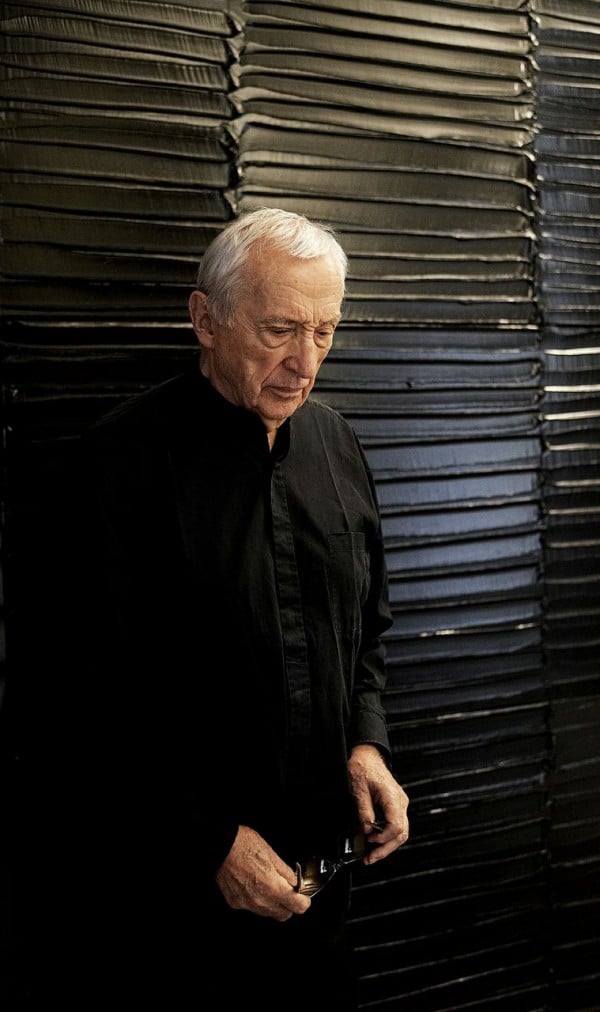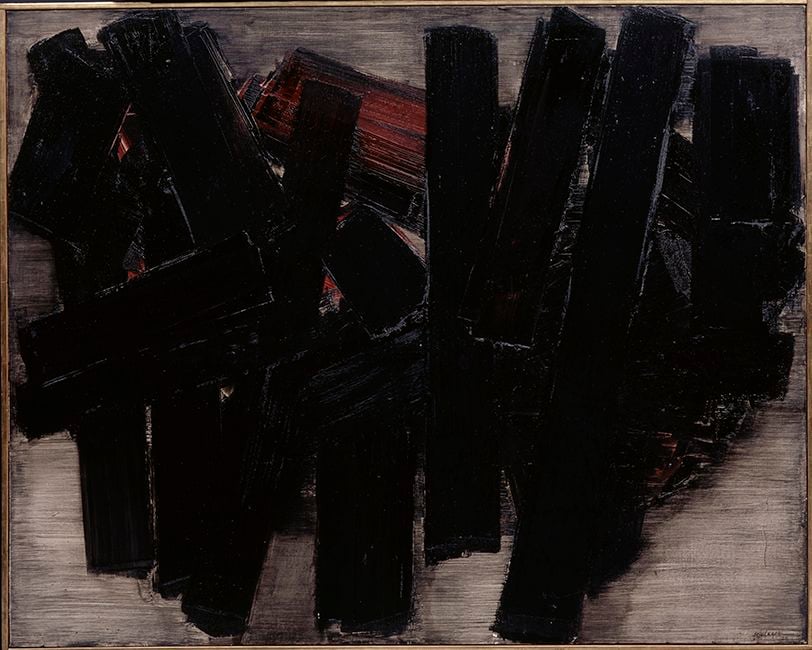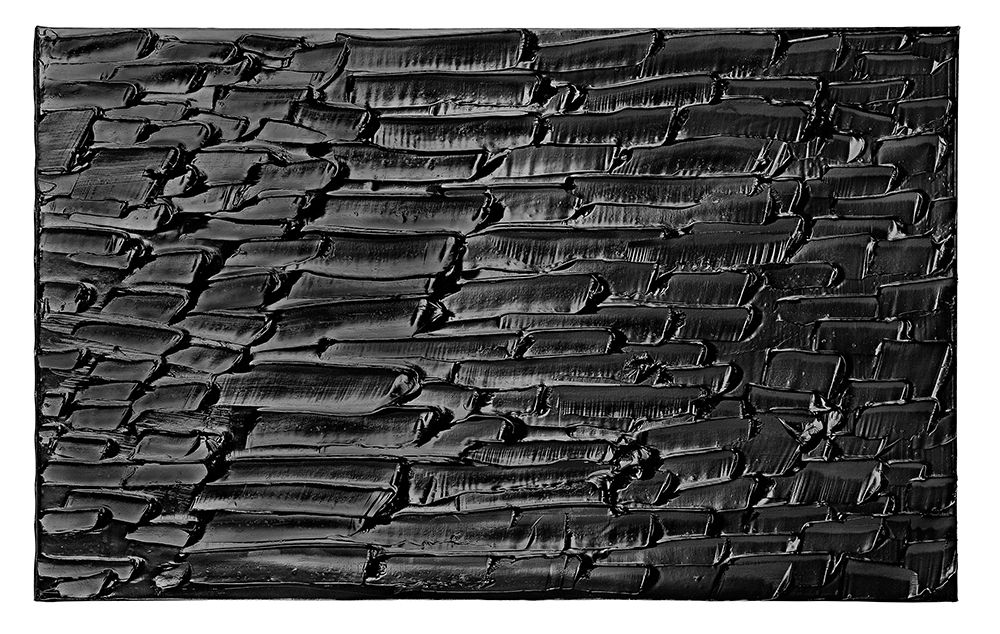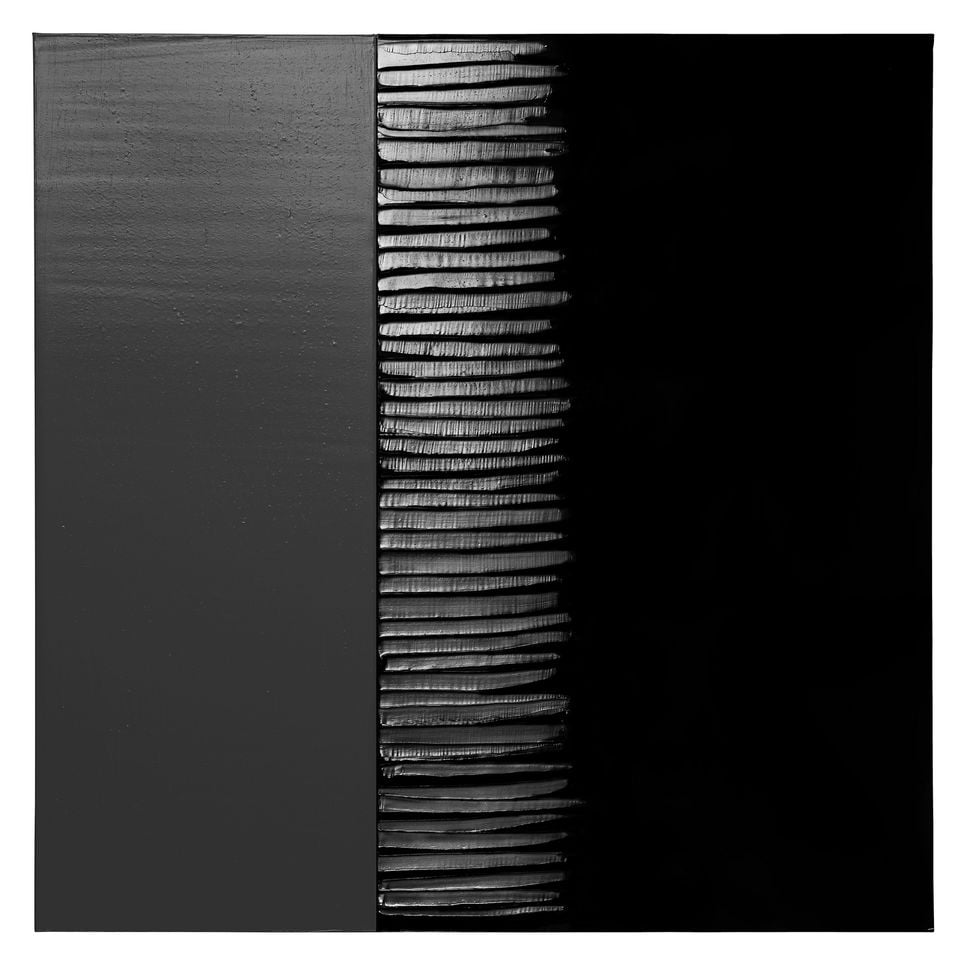Art & Exhibitions
Pierre Soulages, Happy to Stay in the Dark
The 94-year-old French painter's oddly inert "ultra-black" paintings come to New York.

The 94-year-old French painter's oddly inert "ultra-black" paintings come to New York.

Ben Davis

“What do you think about the future?,” Hans Ulrich Obrist asks French painter Pierre Soulages in the catalogue for his current double exhibition at Dominique Lévy and Emmanuel Perrotin galleries. “It doesn’t belong to me,” he answers. That’s an astute assessment of the work, even if it is also part of the stubborn charm of his black paintings.
Soulages, who is 94 years of age, is France’s most famous, most popular, and most successful living painter. His 2009 retrospective at the Pompidou was the largest that institution had ever given to a living artist, and in May, a museum dedicated to his work opened in Rodez, France. The small but substantial Lévy/Perrotin show (the two galleries are stacked one above the other, so it feels like one continuous exhibition) is therefore objectively a big deal. Soulages hasn’t had a New York show since 2005.

Pierre Soulages, Peinture 130.2 x 162.5 cm, 27 juillet 1956 (1956)
Collection of the Montreal Museum of Fine Arts, Montreal
Courtesy Dominique Lévy and Galerie Perrotin.
Starting at the top, in Lévy’s third-floor gallery, a room of 1950s work puts Soulages’s career into perspective. These are brushy canvases, wild but also tastefully balanced. In their day, they were often compared to the American painter Franz Kline, who did very similar zig-zags. In this show, these classic works—which include paintings loaned from both private collections and institutions, including the National Gallery in Washington—mainly serve to set off a suite of 14 of Soulages’s new “outrenoir” or “ultra-black” paintings in the other galleries. All of the latter are dated 2013, though they continue a series he begun late in his career, in 1979, when he became monomaniacally monochromatic.

Pierre Soulages, Peinture 102 x 165 cm, 17 juillet 2013 (2013)
Photo: Courtesy Dominique Lévy and Galerie Perrotin.
The “ultra-black” paintings on view here are medium- to large-sized. Soulages has said that he dislikes the idea of painting as either representation of the world or expression of the self, and in black-on-black he found a way to accentuate his idea that a painting was a thing, by exaggerating what John Yau describes as their “inert materiality.” Some are studies in texture, as in Peinture 102 x 165 cm, 17 juillet 2013, whose thick, frosted surface is a welter of irregular black rectangular marks. Some are studies in the different values black can have, as in Peinture 202 x 202 cm, 13 septembre 2013, with one panel a glossy black, the other a velvety matte, and a spine of shining, horizontal slashes up the center, balancing the two. Out of darkness comes… something very civilized and tasteful.

Pierre Soulages, Peinture 202 x 202 cm, 13 septembre 2013 (2013)
Photo: Courtesy Dominique Lévy and Galerie Perrotin.
In the 1940s, in the immediate post-war period when Soulages was finding his feet as an artist, American-type Abstract Expressionism, with its big, singular gestures, tended to inspire talk about the freedom of the individual; the European equivalent, “Art Informel,” tended to be framed as a response to the disintegration and trauma of war. Soulages never really appreciated such political associations. His long allegiance to black, which began, as the third-floor section of this show illustrates, decades before he found his “ultra-black” style at the age of 60, was intended not so much an evocation of contemporary history but as a retreat from contemporary history, into something artistically pure and primal. In an oft-cited remark, Soulages connects his works to cave painting: “during thousands of years, men went underground, in the absolute black of grottoes, to paint with black.”
For those nostalgic for a time when critics went into lyrical rhapsodies over abstraction, Soulages’s “ultra-black” works tend to provoke lyrical rhapsodies. His paintings scratch that itch. But I also wonder if people want them to be more than the works themselves want to be, since Soulages has specifically rejected all the grander ambitions of his cohort, opting for something much more basic. It makes sense to me that he has lived since 1960 in the small resort town in the south of France: his works are provincial, happily withdrawn into their own small-scale, delicate world.
Soulages has pursued the same project for 35 years now, teasing out the fathomless pleasures of black, turning over the “ultra-black” idea, drawing out the nuances. This is a kind of metaphor for how the viewer is supposed to appreciate the individual works themselves: You will, he hopes, circle the canvas, enjoying the nuances of how the light plays off the different textures. It’s a deliberately minor pleasure, stripped of history (even art history), personal expression, or mythology—anything beyond exploring what pleasures can be provoked by light on a black surface. If these paintings are about any bigger theme, they are about how one can be happy with something as simple as that.
“Pierre Soulages” is on view at Dominique Lévy and Galerie Perrotin 909 Madison Avenue, through June 27, 2014.